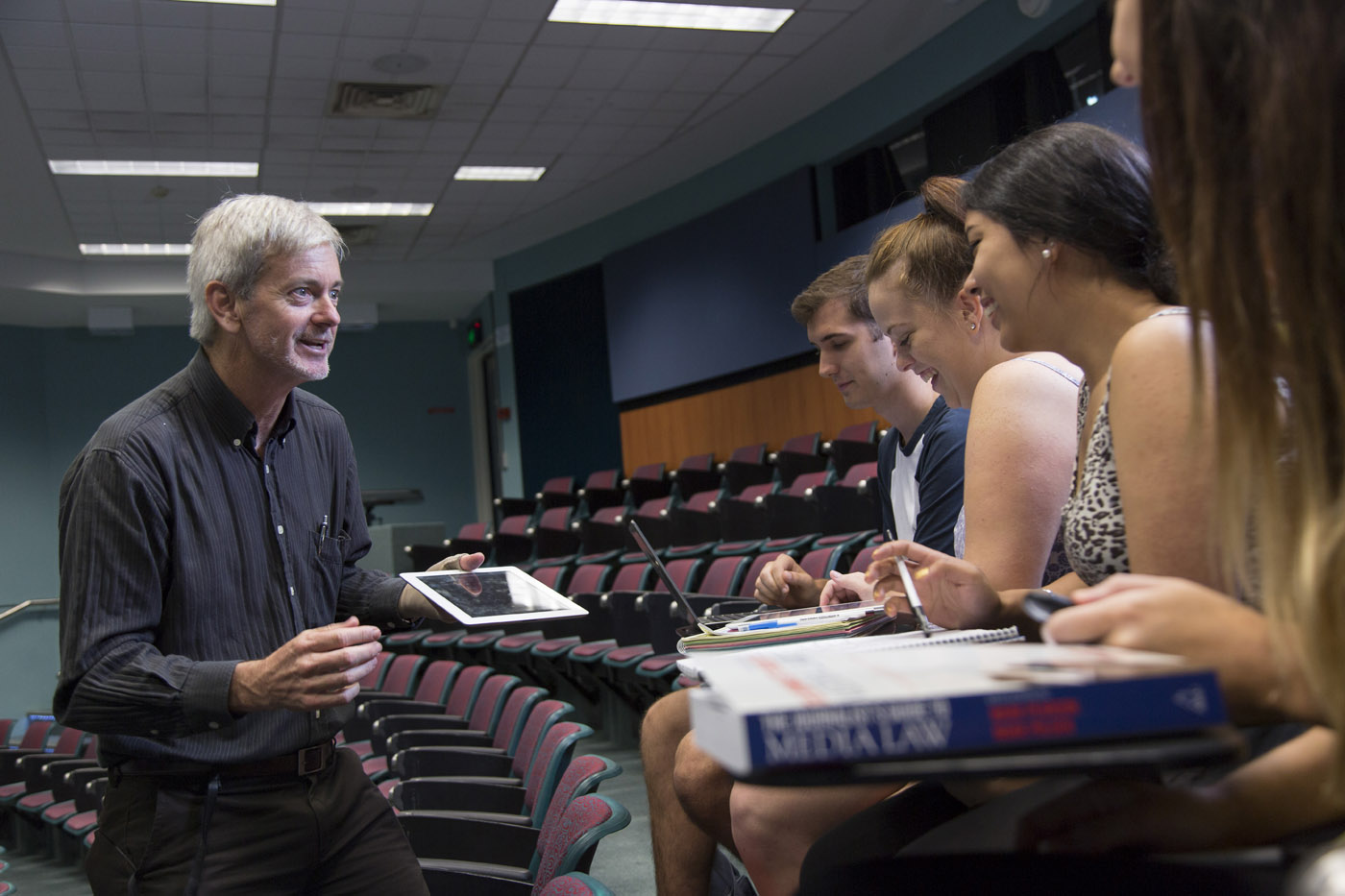Griffith University journalism students are using social media to tackle the traditionally thorny subject of media law.
Each week they hunt for recent examples of legal threats to free expression and share them globally with other students, journalists and scholars using a unique Twitter hashtag, #MLGriff.
This is just one of the practical ways students are learning about an area of journalism which, according to Professor of Journalism and Social Media, Dr Mark Pearson, is more important today than ever before.
“The advent of social media hasn’t changed media law — it’s just that ordinary people are now more likely to encounter it,’’ says the author of the international paperbackBlogging and Tweeting Without Getting Sued.
“Everyone’s a publisher now, whether it’s on Facebook, Twitter or YouTube. The trouble is, there’s only a low level of public understanding of the legal dangers of posting something online.
“So we need to educate people about social media risks – including communication professionals, university students, sports stars, celebrities and the general public.”
One of Australia’s best known media law scholars, Professor Pearson, who started at Griffith University this year, said while all the same principles of media law applied to social media, the latter imposed a new set of problems.
“Many people are under the assumption they are not bound by publishing laws when using social media.
“Things you may think you are saying in confidence to your friends are suddenly public for the world to see once posted online.”
Despite this, he believes people are gradually becoming more cautious with their use of social media.
“Facebook’s biggest danger will be how readily the public accepts its attempts to develop revenue models. I have the sense that many people are getting over Facebook and they are more aware of the privacy issues raised by it.”
So what’s the next big thing?
“Twitter was tipped by many to exceed Facebook as the next social media wave, and it proved very popular in some sectors but not with the broader public. GooglePlus has been slow to gain traction.
“Twitter is very influential in journalistic, political, PR, marketing and celebrity circles.”
Professor Pearson said while mainstream media are facing their greatest challenge in recent history, people will always hunger for news; but how that is delivered will continue to evolve.
“Whether there continues to be profitable models for Fourth Estate journalism or whether citizen journalism and blogging will fill that space is yet to be decided.”
Referring to the new tabloid or ‘compact’ incarnation of Fairfax’s flagship publications,The AgeandThe Sydney Morning Heraldrolled out this monthhe said any improvement in readership was likely to decline after time.
“The circulation of printed newspapers has been in decline in the Western world since the 1950s and that trend is accelerating.
“Changes in newspaper formats are attempts to buy a little time so companies can build subscriptions and advertising in their mobile and online platforms.
“The crunch comes when pay walls are put in place, testing the loyalty of their digital audiences. Then we see whether they need the content enough to pay for it.”
Meanwhile, Professor Pearson’s students are arming themselves with some of media law’s finer nuances.
“They are also drafting law reform submissions to a government inquriy on a free expression issue.
“They can choose between topics including the regulation of jurors’ use of social media, publishing restrictions on the mainstream media, journalists’ shield laws, and media ownership rules.”

